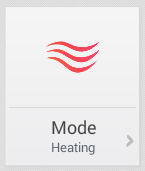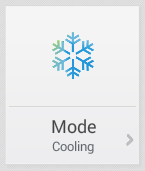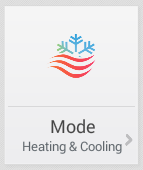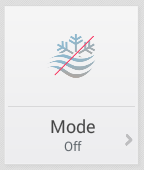Smart rules for regulation of temperature have unified setting for switching between heating and cooling modes.
Define which modes are supported in your location
In order to manage activation of heating or cooling within location, use predefined virtual multi-value switch Mode.
| Winter | Summer | Spring, Autumn | Spring / Autumn |
- To adjust Mode switch to show only modes that are relevant for specific location, use Service Settings of Mode multi-value switch.
- In Service Settings, open DEVICE tab and turn on/off specific modes.
If you want to set different modes for every zone (or section of the house), you can define multiple Mode virtual switches. Go to Settings → Virtual devices → Add virtual device → Multi-Value Switch section: Heating & Cooling.
Set behaviour of heating / cooling smart rules based on Mode value
Mode is supported in smart rules:
- Temperature hysteresis controller
- Temperature PID controller
Partial support for Mode is also in:
- Equithermic regulation
- Blinds adjustment according to sun
Type of Medium that is controlled by output actuator
Medium is e.g. water running in pipes, and you can select between 2 types plus dynamic switching based on reed contact or switch device:
- HOT (increasing temperature when output actuator is open) or
- COLD (decreasing temperature if output actuator is open)
- DYNAMIC (output actuator is controlling system that can produce both HOT and COLD)
Table below shows behaviour of hysteresis and PID smart rules based on type of Medium and value of Mode switch:
| Medium: HOT | Medium: COLD | |
|---|---|---|
| Heating Mode | Output actuator turns | Output actuator is held in |
| Cooling Mode | Output actuator is held in | Output actuator is turned on when |
| Heating & Cooling Mode | Output actuator is turned on when | Output actuator is turned on when |
| Off (No heating, no cooling) | Output actuator is held in | Output actuator is held in |
Related articles





